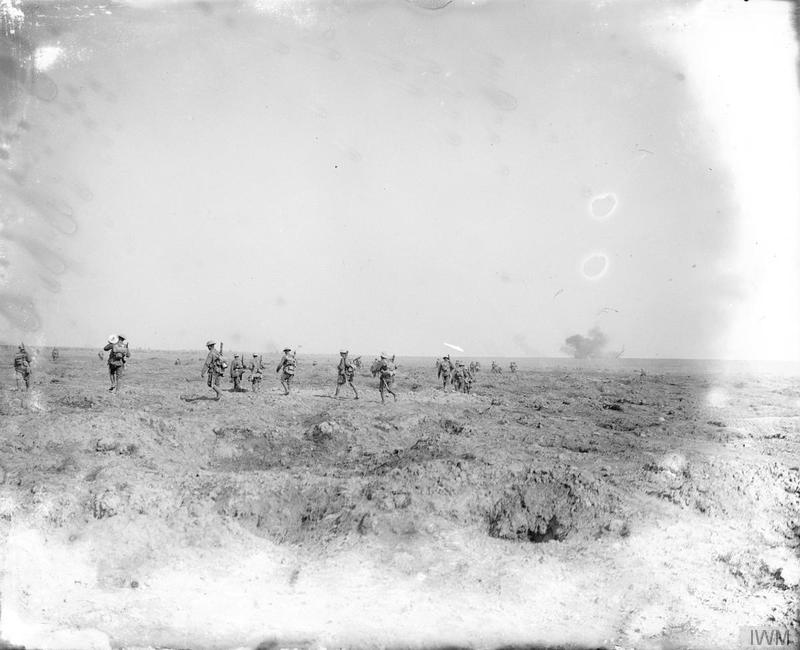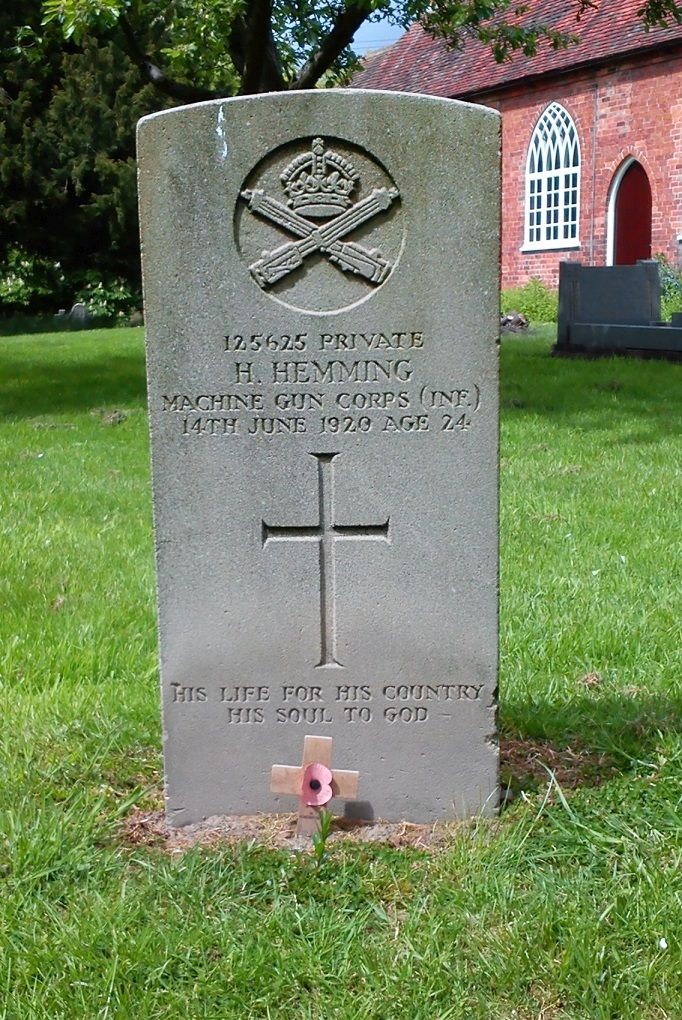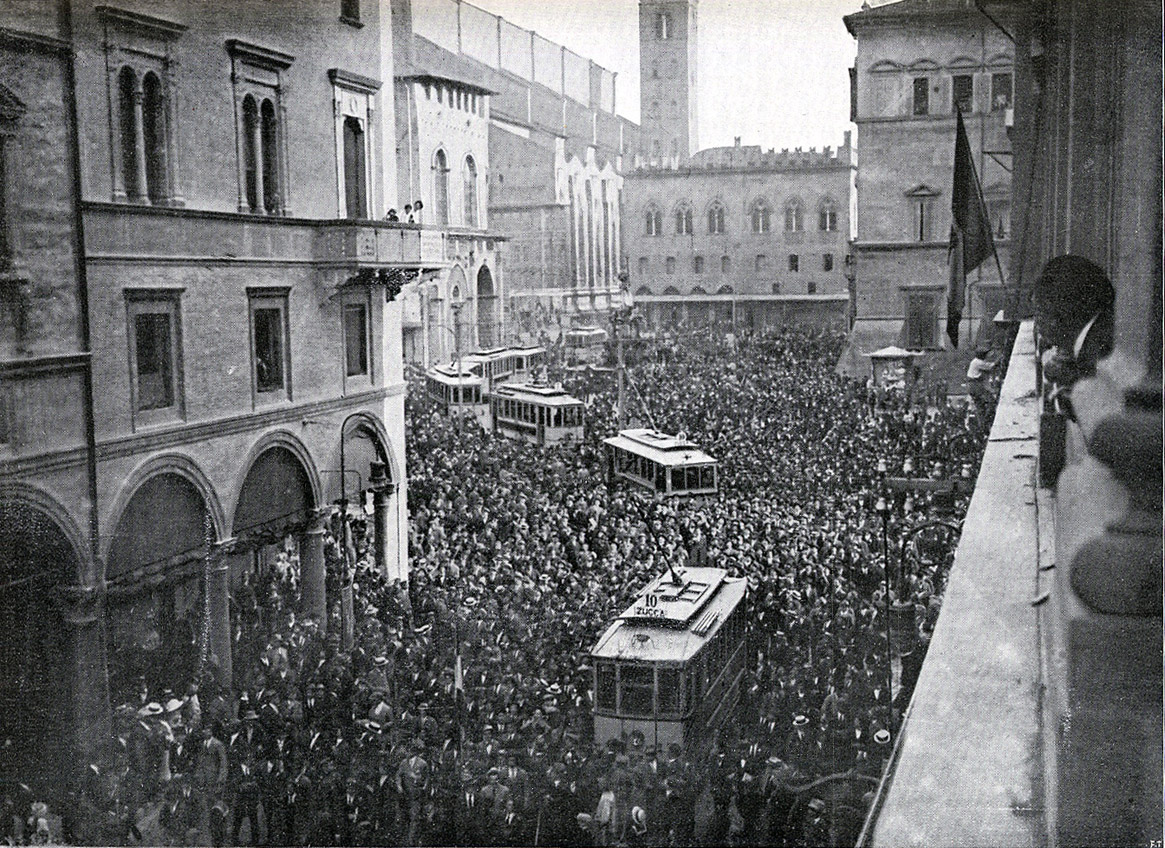|
95th Brigade (United Kingdom)
The 95th Brigade was an infantry brigade formation of the British Army, created during World War I. It was raised from men volunteering for Lord Kitchener's New Armies and assigned to the 32nd Division. The brigade, initially composed of three service battalions (the 14th, 15th and 16th, the Birmingham Pals) of the Royal Warwickshire Regiment and one (the 12th, Bristol's Own) of the Gloucestershire Regiment, was sent to the Western Front in November 1915, where it was to serve for most of the war, and later briefly on the Italian Front in late 1917 before returning to the Western Front in April 1918. In December 1915, the brigade was transferred to the 5th Division, a Regular Army formation, and all three battalions of the Royal Warwickshire Regiment were exchanged for three Regular Army battalions, and was to remain with this composition for the rest of the war. Order of battle The 95th Brigade was composed as follows during the war: * 14th (Service) Battalion, Royal Warwick ... [...More Info...] [...Related Items...] OR: [Wikipedia] [Google] [Baidu] |
Infantry
Infantry is a military specialization which engages in ground combat on foot. Infantry generally consists of light infantry, mountain infantry, motorized infantry & mechanized infantry, airborne infantry, air assault infantry, and marine infantry. Although disused in modern times, heavy infantry also commonly made up the bulk of many historic armies. Infantry, cavalry, and artillery have traditionally made up the core of the combat arms professions of various armies, with the infantry almost always comprising the largest portion of these forces. Etymology and terminology In English, use of the term ''infantry'' began about the 1570s, describing soldiers who march and fight on foot. The word derives from Middle French ''infanterie'', from older Italian (also Spanish) ''infanteria'' (foot soldiers too inexperienced for cavalry), from Latin '' īnfāns'' (without speech, newborn, foolish), from which English also gets '' infant''. The individual-soldier term ''infantry ... [...More Info...] [...Related Items...] OR: [Wikipedia] [Google] [Baidu] |
5th Infantry Division (United Kingdom)
The 5th Infantry Division was a regular army infantry division of the British Army. It was established by Arthur Wellesley, 1st Duke of Wellington for service in the Peninsular War, as part of the Anglo-Portuguese Army, and was active for most of the period since, including the First World War and the Second World War and was disbanded soon after. The division was reformed in 1995 as an administrative division covering Wales and the English regions of West Midlands, East Midlands and East. Its headquarters were in Shrewsbury. It was disbanded on 1 April 2012. Peninsular War The 5th Division during the Peninsular War under the command of General James Leith was present at most of the major engagements including the Battle of Bussaco, the Battle of Sabugal, the Siege of Almeida, the Battle of Badajoz, the Battle of Salamanca, the Battle of Vitoria, the Siege of San Sebastian, the Battle of Nivelle and the Battle of the Nive. Peninsular War order of battle The order of battl ... [...More Info...] [...Related Items...] OR: [Wikipedia] [Google] [Baidu] |
Machine Gun Corps
The Machine Gun Corps (MGC) was a corps of the British Army, formed in October 1915 in response to the need for more effective use of machine guns on the Western Front in the First World War. The Heavy Branch of the MGC was the first to use tanks in combat and was subsequently turned into the Tank Corps, later called the Royal Tank Regiment. The MGC remained in existence after the war until it was disbanded in 1922. Formation At the outbreak of the First World War in August 1914, the tactical potential of machine guns was not appreciated by the British Armed Forces. The prevalent attitude of senior ranks at the outbreak of the Great War can be summed up by the opinion of an officer expressed a decade earlier that a single battery of machine guns per army corps was a sufficient level of issue. Despite the evidence of fighting in Manchuria (1905 onwards) the army therefore went to war with each infantry battalion and cavalry regiment containing a machine gun section of just two ... [...More Info...] [...Related Items...] OR: [Wikipedia] [Google] [Baidu] |
Duke Of Cornwall's Light Infantry
The Duke of Cornwall's Light Infantry (DCLI) was a light infantry regiment of the British Army in existence from 1881 to 1959. The regiment was created on 1 July 1881 as part of the Childers Reforms, by the merger of the 32nd (Cornwall Light Infantry) Regiment of Foot and the 46th (South Devonshire) Regiment of Foot. The DCLI also incorporated the militia and rifle volunteers of Cornwall. In 1959 the regiment merged with the Somerset Light Infantry (Prince Albert's) to form the Somerset and Cornwall Light Infantry. However, this was amalgamated with the Durham Light Infantry, the King's Shropshire Light Infantry and the King's Own Yorkshire Light Infantry to form The Light Infantry which was also merged, in 2007, with the Devonshire and Dorset Regiment, the Royal Gloucestershire, Berkshire and Wiltshire Regiment and the Royal Green Jackets to form The Rifles, which continues the lineage of the DCLI. History The regiment was created on 1 July 1881 as part of the Childers Ref ... [...More Info...] [...Related Items...] OR: [Wikipedia] [Google] [Baidu] |
East Surrey Regiment
The East Surrey Regiment was a line infantry regiment of the British Army in existence from 1881 until 1959. The regiment was formed in 1881 under the Childers Reforms by the amalgamation of the 31st (Huntingdonshire) Regiment of Foot, the 70th (Surrey) Regiment of Foot, the 1st Royal Surrey Militia and the 3rd Royal Surrey Militia. In 1959, after service in the Second Boer War and both World War I and World War II, the East Surrey Regiment was amalgamated with the Queen's Royal Regiment (West Surrey) to form the Queen's Royal Surrey Regiment, which was, in 1966, merged with the Queen's Own Buffs, The Royal Kent Regiment, the Royal Sussex Regiment and the Middlesex Regiment (Duke of Cambridge's Own) to form the Queen's Regiment. The Queen's Regiment was subsequently amalgamated with the Royal Hampshire Regiment to form the present Princess of Wales's Royal Regiment (Queen's and Royal Hampshires). History Early history In 1702 a regiment of marines was raised in the West Countr ... [...More Info...] [...Related Items...] OR: [Wikipedia] [Google] [Baidu] |
Devonshire Regiment
The Devonshire Regiment was a line infantry regiment of the British Army that served under various titles and served in many wars and conflicts from 1685 to 1958, such as the Second Boer War, the First World War and the Second World War. In 1958 the regiment was amalgamated with the Dorset Regiment to form the Devonshire and Dorset Regiment which, in 2007, was amalgamated with the Royal Gloucestershire, Berkshire and Wiltshire Regiment, the Royal Green Jackets and The Light Infantry to form a new large regiment, The Rifles. History Formation In June 1667 Henry Somerset, Marquess of Worcester, was granted a commission to raise a regiment of foot, The Marquess of Worcester's Regiment of Foot. The regiment remained in existence for only a few months and was disbanded in the same year. It was re-raised in January 1673 and again disbanded in 1674. In 1682, Henry Somerset was created Duke of Beaufort, and in 1685 he was again commissioned to raise a regiment, The Duke of Beaufort's Re ... [...More Info...] [...Related Items...] OR: [Wikipedia] [Google] [Baidu] |
12th (Service) Battalion, Gloucestershire Regiment (Bristol's Own)
The 12th (Service) Battalion (Bristol's Own) of the Gloucestershire Regiment (the 'Glosters') was a 'Pals battalion' of ' Kitchener's Army' raised immediately after the outbreak of World War I through the initiative of the City of Bristol. It saw action at the Somme, Arras and Ypres, before moving to the Italian Front. It returned to the Western Front to fight in the German spring offensive and the victorious Allied Hundred Days Offensive. Recruitment On 6 August 1914, less than 48 hours after Britain's declaration of war, Parliament sanctioned an increase of 500,000 men for the Regular British Army, and the newly-appointed Secretary of State for War, Earl Kitchener of Khartoum issued his famous call to arms: 'Your King and Country Need You', urging the first 100,000 volunteers to come forward. This group of six divisions with supporting arms became known as Kitchener's First New Army, or 'K1'.Grist, p. 53. A flood of volunteers poured into the recruiting offices across ... [...More Info...] [...Related Items...] OR: [Wikipedia] [Google] [Baidu] |
16th (Service) Battalion, Royal Warwickshire Regiment (3rd Birmingham)
16 (sixteen) is the natural number following 15 and preceding 17. 16 is a composite number, and a square number, being 42 = 4 × 4. It is the smallest number with exactly five divisors, its proper divisors being , , and . In English speech, the numbers 16 and 60 are sometimes confused, as they sound very similar. Sixteen is the fourth power of two. For this reason, 16 was used in weighing light objects in several cultures. The British have 16 ounces in one pound; the Chinese used to have 16 ''liangs'' in one ''jin''. In old days, weighing was done with a beam balance to make equal splits. It would be easier to split a heap of grains into sixteen equal parts through successive divisions than to split into ten parts. Chinese Taoists did finger computation on the trigrams and hexagrams by counting the finger tips and joints of the fingers with the tip of the thumb. Each hand can count up to 16 in such manner. The Chinese abacus uses two upper beads to represent the 5s and 5 low ... [...More Info...] [...Related Items...] OR: [Wikipedia] [Google] [Baidu] |
15th (Service) Battalion, Royal Warwickshire Regiment (2nd Birmingham)
15 (fifteen) is the natural number following 14 and preceding 16. Mathematics 15 is: * A composite number, and the sixth semiprime; its proper divisors being , and . * A deficient number, a smooth number, a lucky number, a pernicious number, a bell number (i.e., the number of partitions for a set of size 4), a pentatope number, and a repdigit in binary (1111) and quaternary (33). In hexadecimal, and higher bases, it is represented as F. * A triangular number, a hexagonal number, and a centered tetrahedral number. * The number of partitions of 7. * The smallest number that can be factorized using Shor's quantum algorithm. * The magic constant of the unique order-3 normal magic square. * The number of supersingular primes. Furthermore, * 15 is one of two numbers within the ''teen'' numerical range (13-19) not to use a single-digit number in the prefix of its name (the first syllable preceding the ''teen'' suffix); instead, it uses the adjective form of five (''fif' ... [...More Info...] [...Related Items...] OR: [Wikipedia] [Google] [Baidu] |
14th (Service) Battalion, Royal Warwickshire Regiment (1st Birmingham)
14 (fourteen) is a natural number following 13 and preceding 15. In relation to the word "four" ( 4), 14 is spelled "fourteen". In mathematics * 14 is a composite number. * 14 is a square pyramidal number. * 14 is a stella octangula number. * In hexadecimal, fourteen is represented as E * Fourteen is the lowest even ''n'' for which the equation φ(''x'') = ''n'' has no solution, making it the first even nontotient (see Euler's totient function). * Take a set of real numbers and apply the closure and complement A complement is something that completes something else. Complement may refer specifically to: The arts * Complement (music), an interval that, when added to another, spans an octave ** Aggregate complementation, the separation of pitch-class ... operations to it in any possible sequence. At most 14 distinct sets can be generated in this way. ** This holds even if the reals are replaced by a more general topological space. See Kuratowski's closure-complement pr ... [...More Info...] [...Related Items...] OR: [Wikipedia] [Google] [Baidu] |
Standing Army
A standing army is a permanent, often professional, army. It is composed of full-time soldiers who may be either career soldiers or conscripts. It differs from army reserves, who are enrolled for the long term, but activated only during wars or natural disasters, and temporary armies, which are raised from the civilian population only during a war or threat of war and disbanded once the war or threat is over. Standing armies tend to be better equipped, better trained, and better prepared for emergencies, defensive deterrence, and particularly, wars. Wills, Garry (1999). ''A Necessary Evil, A History of American Distrust of Government'' New York, N.Y.; Simon & Schuster. The term dates from approximately 1600 CE, although the phenomenon it describes is much older. History Ancient history Mesopotamia Sargon of Akkad, the founder of the Akkadian Empire, is believed to have formed the first standing professional army. Tiglath-Pileser III of Assyria (ruled 745–727 BC) created t ... [...More Info...] [...Related Items...] OR: [Wikipedia] [Google] [Baidu] |
Italian Front (World War I)
The Italian front or Alpine front ( it, Fronte alpino, "Alpine front"; in german: Gebirgskrieg, "Mountain war") involved a series of battles at the border between Austria-Hungary and Italy, fought between 1915 and 1918 in the course of World War I. Following secret promises made by the Allies in the 1915 Treaty of London, Italy entered the war aiming to annex the Austrian Littoral, northern Dalmatia, and the territories of present-day Trentino and South Tyrol. Although Italy had hoped to gain the territories with a surprise offensive, the front soon bogged down into trench warfare, similar to that on the Western Front in France, but at high altitudes and with very cold winters. Fighting along the front displaced much of the local population, and several thousand civilians died from malnutrition and illness in Italian and Austro-Hungarian refugee-camps. The Allied victory at Vittorio Veneto, the disintegration of the Habsburg empire, and the Italian capture of Trento and Tri ... [...More Info...] [...Related Items...] OR: [Wikipedia] [Google] [Baidu] |







